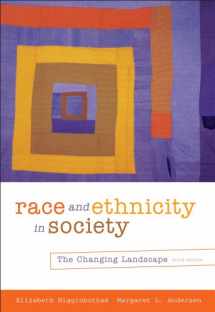
Race and Ethnicity in Society: The Changing Landscape
Book details
Summary
Description
This engaging reader is organized in four major thematic parts, subdivided into thirteen different sections. Part I ("The Social Basis of Race and Ethnicity") establishes the analytical frameworks that are now being used to think about race in society. The section examines the social construction of race and ethnicity as concepts and experience. Part II ("Continuity and Change: How We Got Here and What It Means") explores both the historical patterns of inclusion and exclusion that have established racial and ethnic inequality, while also explaining some of the contemporary changes that are shaping contemporary racial and ethnic relations. Part III ("Race and Social Institutions") examines the major institutional structures in contemporary society and investigates patterns of racial inequality within these institutions. Persistent inequality in the labor market and in patterns of community, residential, and educational segregation continue to shape the life chances of different groups. Part IV ("Building a Just Society") concludes the book by looking at both large-scale contexts of change, such as those reflected in the movement to elect the first African American president.


We would LOVE it if you could help us and other readers by reviewing the book
Book review



